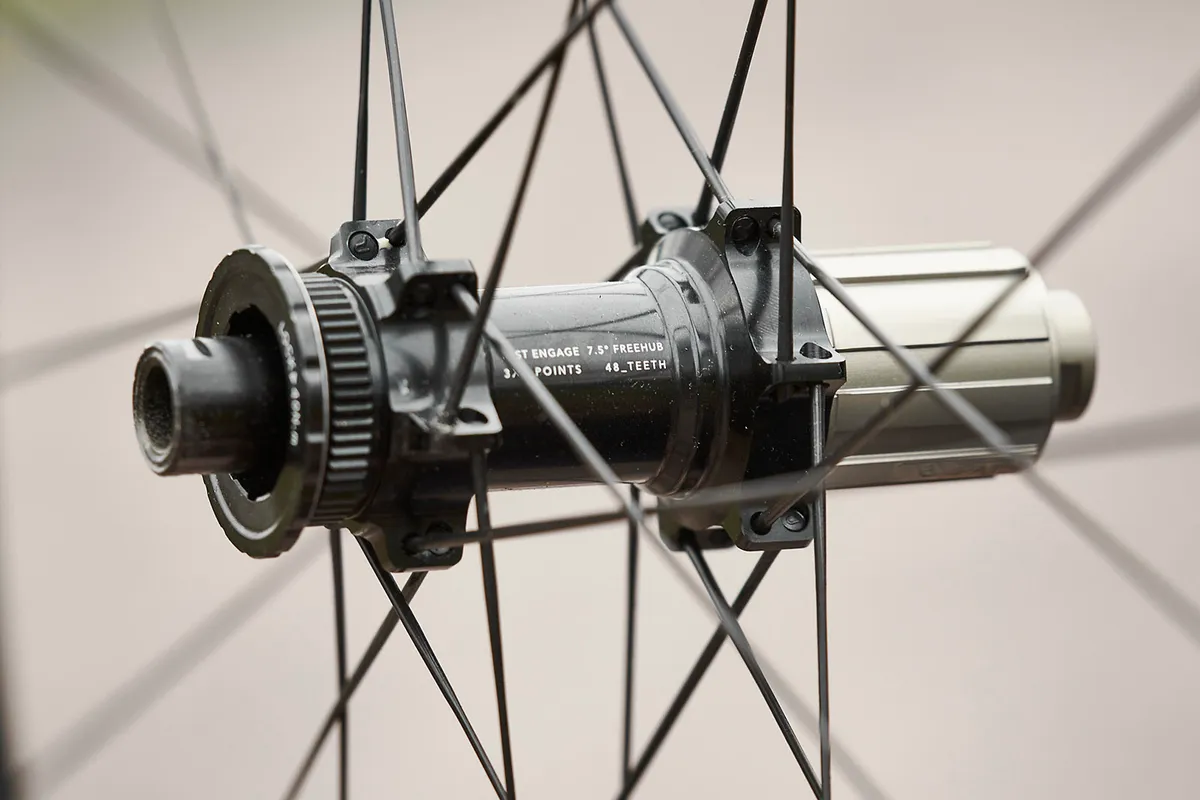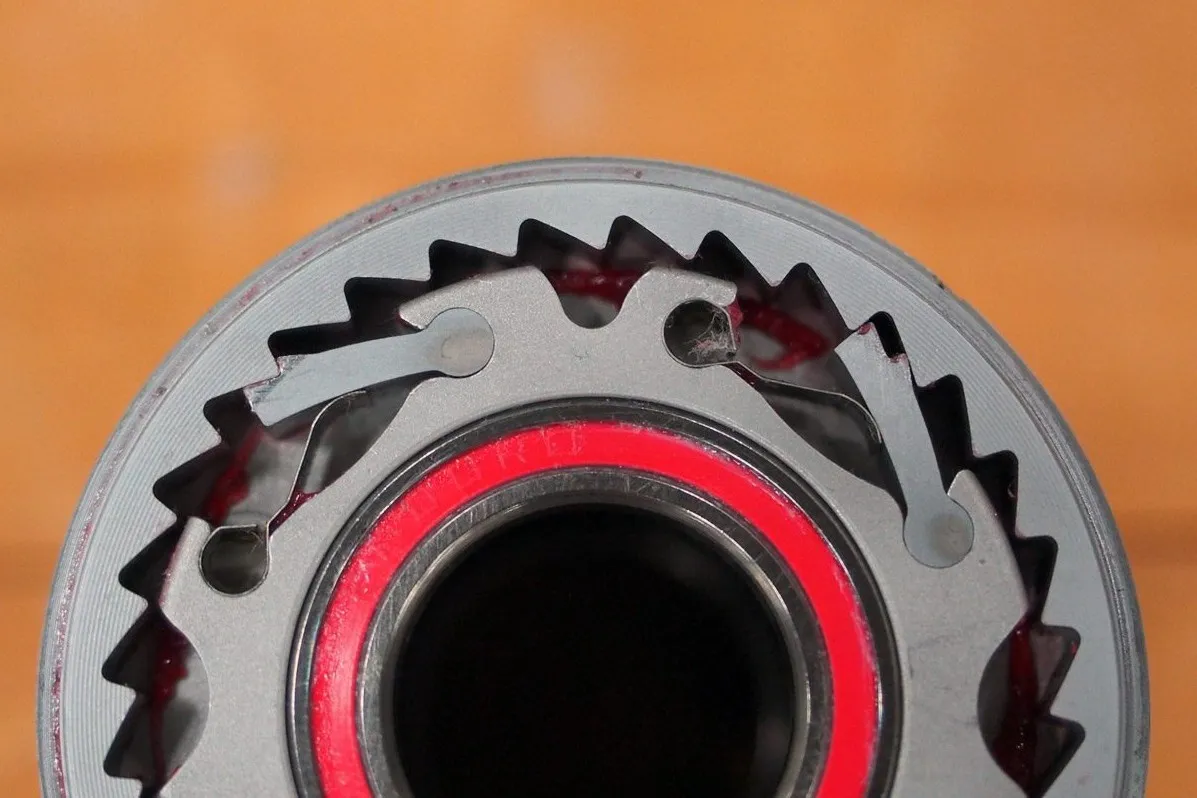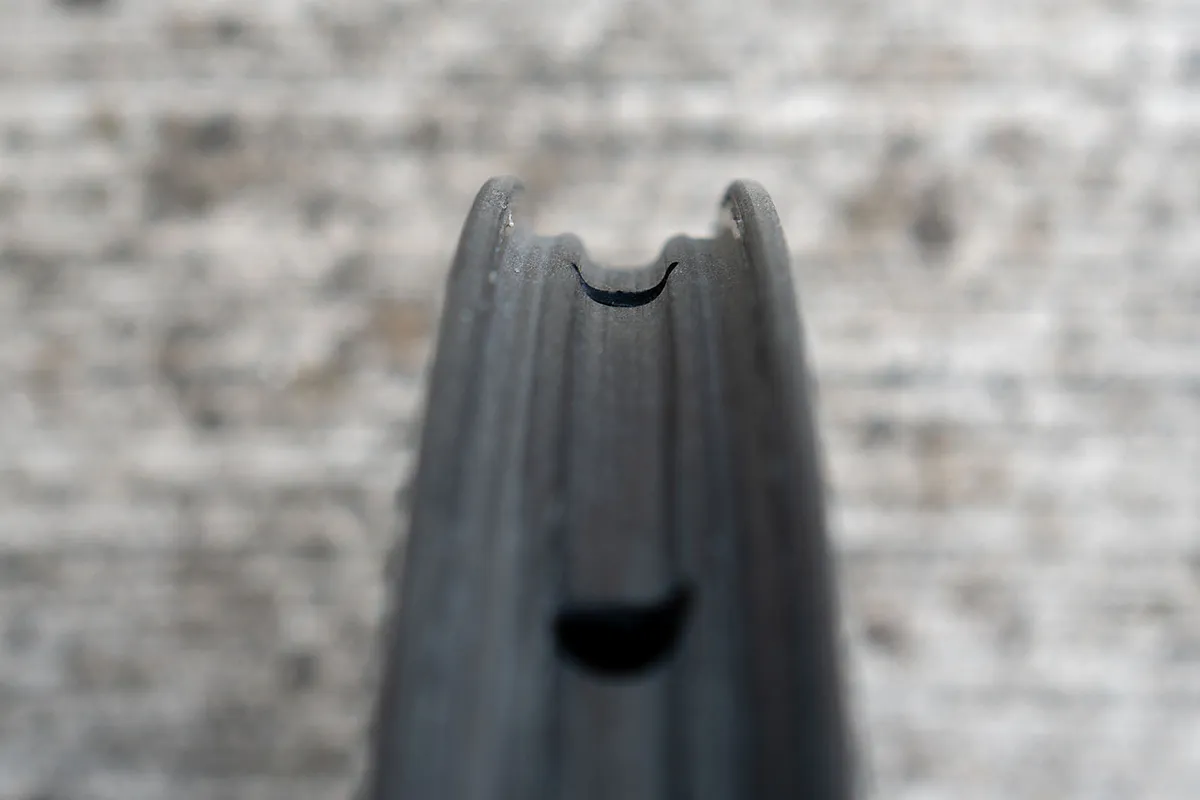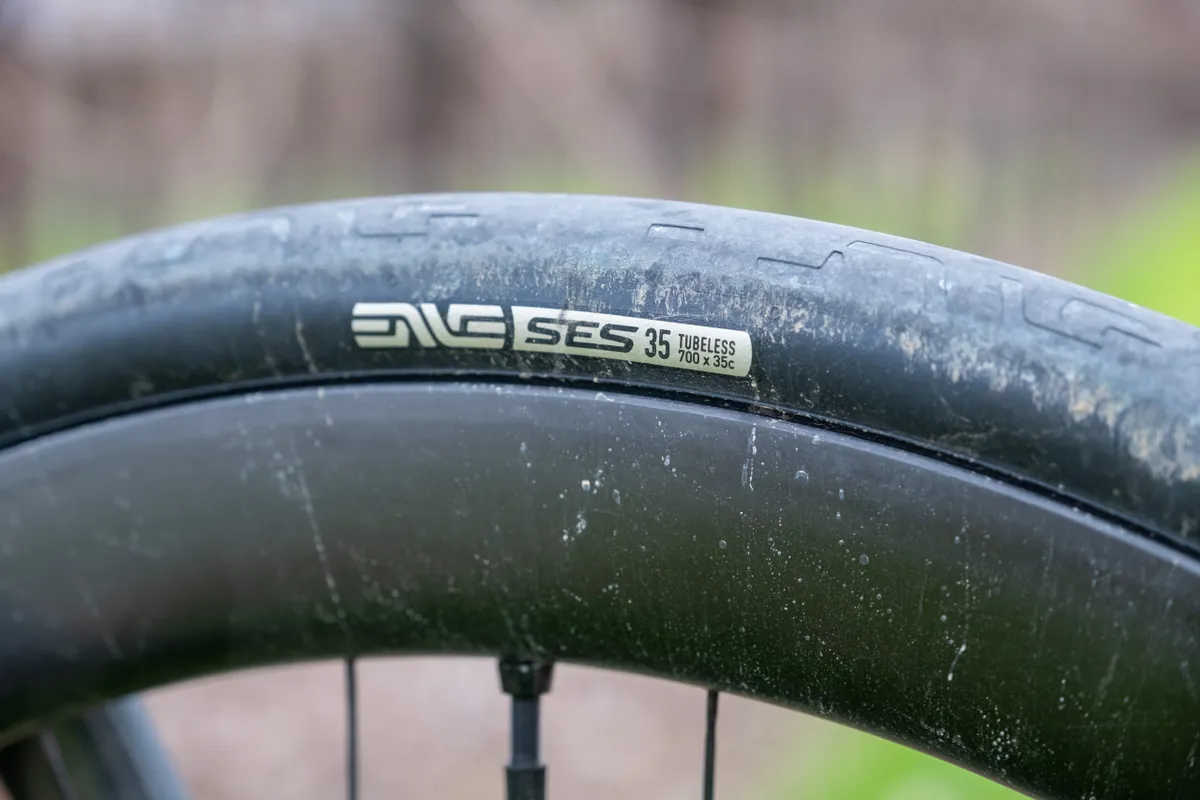Earlier this year, I put a series of mid-priced alloy wheelsets to the test and came away mightily impressed.
Guess what? The same thing’s happened again – only this time, I’ve been putting six of the latest sub-£1,000 mid-section carbon wheelsets to the sword.
Such is the collective competency of these carbon wheels, not only do they offer tangible performance improvements over stock alloy wheels, they arguably make a mockery of wheelsets costing more than twice the price.
Of course, budget is almost always a factor in any buying decision, and while many lust after ever-higher spec offerings, I think it’s in the sub-£1,000 category that the greatest bang for your buck can be found.
Meanwhile, I sense that, in reality, some of the factors many of us use to justify our purchase decisions may be driven more by allegiances to favoured brands, regardless of spec or design, or by anecdotal evidence of one person’s good or bad experience.
Beyond those factors, though, what were my main takeaways from many kilometres spent testing £1,000 carbon wheels? Let’s find out – but before that, here are the wheelsets I tested, how they scored and links to each of the reviews (apart from the Giant wheelset, for which the review will be published later this week):
Aerodynamic efficiency comes from more than a deep profile

Deeper-section rims have long been considered more aerodynamically efficient than shallow rims. All else being equal, this remains generally true, especially in controlled and consistent conditions – such as those offered by a wind tunnel.
That said, it’s also important to consider the width (and resulting shape) of the rim, because this can influence how the air behaves as it passes over the surface.
Wider rims, with rounder, blunter profiles, are generally considered to handle better in crosswinds than narrower, sharper profiles.
This is because the point at which the rim can no longer manage the airflow in high-yaw scenarios occurs more gradually when the trailing edge has a softer transition.

As a result, you don’t get as sudden a ‘push’ of a crosswind on the rim when going past a gap in a hedge on a very windy day, for example. The pressure may still be noticeable in windy conditions, but if it’s not sudden or surprising, it can be managed and corrected for.
This, of course, is a simplification with many factors at play, and brands are regularly iterating new takes on this principle, but the general point stands.
This can mean that in everyday conditions, where the wind is moving around and coming from all directions, it can often be easier and faster to ride a wider-arcing rim.
For example, the Roval Rapide C38 was the narrowest of the wheels on test (27.4mm externally), while the Hunt 50 Carbon Disc and Giant SLR 2 50 Disc were the widest, with 30mm-wide rims.

In isolation, 2.6mm might not sound like much, but both of the wider wheels felt as stable in crosswinds as the narrower one – despite being 12mm deeper.
Naturally, then, you benefit from the aerodynamic benefit of deeper rims, but without the usual handling drawbacks associated with them.
How the rim interacts with a tyre is also important. A wider rim tends to support tyres to a squatter, wider shape, which can then interact more efficiently with the rim behind it – especially if they line up externally.
In the case of the Hunt 50 Carbon Disc (22mm internal, 30mm external), that meant a 700 x 28c Continental GP5000 S TR tyres inflated to 29.8mm wide, bringing a smoother interaction between tyre and rim.

It’s worth pointing out that, aerodynamically, the Roval wheelset might perform better with a narrower tyre, but this comes with its own potential drawbacks regarding tyre pressures, comfort and grip.
It’s impossible to be definitive here, but with brands such as Hunt regularly publishing their findings on the performance benefits of wider rims interacting more efficiently with wider tyres (even with differentiated profiles front-to-rear in some cases), there’s plenty of evidence to suggest this makes a difference.
Of course, if you’re a confident rider, deeper rims can be faster – especially at higher speeds and on less windy days. Wout van Aert didn’t use double disc wheels at the Paris Olympics just because he thought it would look cool, after all.
If you can’t handle a bike like a cyclocross world champion, though, don’t assume rim depth is the only factor that matters for better aerodynamic performance.
Pawl or ratchet-based freehubs? It makes no difference on the road

These days, at this price point, you can have a pawl or ratchet-based freehub – but it’s impossible to tell the difference on the road.
Mechanically speaking, of course, there is a stark difference.
Our guide to hub tech covers it in detail, but in short: a pawl-based freehub uses multiple (often 3-6) small individually sprung pawls, which engage against the external face of a toothed ring when pedalling.

A ratchet-based freehub uses a spring to push the serrated inner faces of two ratchet rings together, which slide over when freewheeling and mesh together when pedalling.
I have always been of the mind that ratchet systems are mechanically ‘superior’, because they spread the load over more contact points (a ratchet ring commonly has 30, 36, 48 or more) and with only one or two larger springs to push them together.
All moving parts of a hub system will wear eventually – be they pawls, springs, ratchet rings or bearings – but the idea that fewer and larger parts are easier to service and might prove more reliable in the grand scheme of things, is compelling.

This, of course, assumes that larger equates to ‘stronger’, but it’s worth remembering a well-manufactured pawl-based freehub with tolerances over and above average will probably prove more reliable or long-lasting than a ratchet freehub made using lower-quality materials or techniques.
Hence, the concept of hub build quality is also important, something only extended real-world use averaged out over many test cases can prove.
But, regardless of whether I was testing a wheelset with a pawl or ratchet-based freehub, I came away impressed with all of them when it comes to performance.
Hookless works, but it remains limiting and confusing

Hookless rims are largely the preserve of more expensive wheels. This is likely down to the fact that it’s a newer design (in road bike tech, at least), and so has been positioned as premium by the brands embracing it.
This has often confused us at BikeRadar HQ – in theory, a hookless carbon rim is easier to manufacture thanks to a less complicated design (there aren’t any bead hooks to mould), so it should be cheaper to make.
It’s worth pointing out that Zipp marginally reduced the prices of some of its wheels when moving wholesale to hookless technology a few years ago, but the cheapest remains the 303S at over £1,000.

That said, the Giant SLR 2 50 Disc (£719.98 / €1,038) was the second-cheapest wheelset on test here. It stands out among its testmates as the only model with hookless rims – and the cheapest hookless carbon wheelset I’m aware of.
The penalty, of course, is being locked into using tubeless tyres. While you can set up those tyres with inner tubes (as I did for testing), you can’t use a clincher tyre, because the tyre bead isn’t designed to work without a bead hook at the rim.
There also remain some inconsistencies across brands when it comes to compatibility – Giant, for example, until recently recommended a specific list of tyres, although this has since been relaxed somewhat.

For their part, tyre brands now usually claim their tubeless tyres are suitable for all hookless rims, as long as they comply with ETRTO (European Tyre and Rim Technical Organisation) standards.
But then there are hookless wheels, such as the Zipp 303 XPLR, which sit outside these standards almost completely, in favour of Zipp’s own testing standards.
It still makes for a frustratingly confusing picture, doesn’t it?
Wider rims are ‘progressive’, but don’t quibble over a millimetre

Rims are getting wider, mainly, in response to the growing desire to run wider tyres on the road.
Wider rims offer improved support to wider tyres, and, in turn, can deliver better performance (be it through aerodynamic optimisation as I’ve mentioned, reduced rolling resistance or improved grip).
The trend seems to be moving in only one direction, but it’s not worth worrying about a millimetre or two here or there.
If you’re in possession of a carbon wheelset that's mechanically sound but is a couple of millimetres shy of wheelsets on sale today, stick with it, because the chances are you’ll hardly notice the difference between the two out on the road.

Just as it’s generally considered unwise on a cost-benefit ratio to upgrade to the latest smartphone or computer if you’ve got a recent iteration already, even the cheapest wheelset on test – the Velocite Hyperdrive Carbon 50mm Disc – will still require you to part with almost £700.
Ultimately, these incremental size jumps will deliver vanishingly small performance gains for the money – whether your priority is speed or comfort.
That said, if the gap is wider or your wheels require money to bring them back to good working order, the case to upgrade is much stronger.
Want the best bang for your buck? It’s right here

Previously, I felt the £1,500 / $1,500 mark offered the bang-for-buck sweet spot.
Experience told me the cheapest carbon wheels were either out of date, or could be low quality in some way, while the most expensive wheels offered only a little more performance for a lot of cash.
I’ve tested road bike wheels at most price points for BikeRadar, and while the best premium wheelsets can bring a certain level of polished performance that some may be willing to shell out for, the needle appears to have moved.
It’s clear the designs of cheaper carbon wheelsets are now up to date – even progressive in some cases – while features such as hookless designs and ratchet-based freehubs (once the preserve of premium wheelsets) are also filtering down to more accessible price points.
And as for reliability? Of course, these wheels need to be tested in the toughest crucible of all to truly assess that – real life, by real owners – rather than my limited time with them.
But, as far as I can tell, it’s a strong batch, and there are no red flags to raise yet.
I’m looking forward to seeing what you think in the comments section below this article, and reading about your experiences.
Now, though, instead of recommending a so-called mid-range wheelset, I’ll think twice before doing so. You can buy carbon wheelsets for £1,000 (or a fair chunk less) and not compromise where it matters most.



